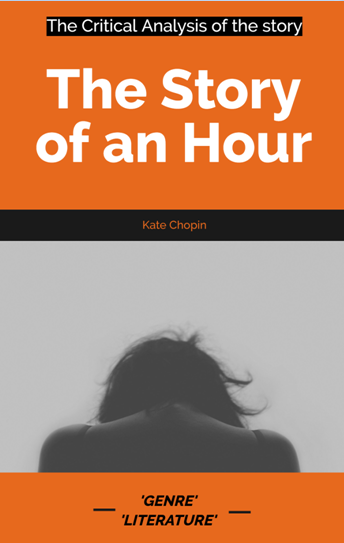
Kate Chopin was a popular writer of the 1880s. But her popularity was moderate. She inked themes like the independence of women and sexuality. And besides her best known and acclaimed novel “The Awakening’, her short stories were also famous for having the flavors and shades of women’s freedom and sexuality. The story ‘The Story of an Hour’ is a masterpiece reflecting her ideas and view of life. Chopin was born on 8th February, in the year 1851 in St. Louis, Missouri. Though born in a wealthy family, her childhood was engulfed with tragedies. After the death of her father in a train accident, she faced several other deaths of her near and dear ones like her older brother, great grandmother in the following years. She was married to wealthy businessman Oscar Chopin at the age of 19. She was the mother of seven children before Oscar’s death in 1883. Her own experiences made her pen strong to pen her ideas against the then society and the oppression against women. And ‘The Story of an Hour’ is a unique representation of her own concept of liberation.
‘The Story of an Hour’ was first published in the year 1894 in ‘Vogue’ magazine. It is deemed to be the shortest story penned by her. The story was one of the most widely read stories of her time. The plot of the story reveals the life of Louise Mallard, a heart patient with all her odds in life. The news of the death of Brently, her husband gives her a severe shock and makes her cry. Her sister Josephine gives her the news in the presence of Richard, a friend of Brently. After recovering from the initial shock, Louise goes to a room and locks herself up. Sitting on a chair near the open window, she looks at the outside world and the lavish Nature. Idiosyncratically she feels a sense of joy, rather than be called a forbidden sense of joy in her mind. Her mind is filled with a sense of freedom. But at the end of the story when she finds Brently returns unharmed proving the news of death is false, she dies. The doctor diagnoses the cause as a failure of the heart due to the sudden joy of seeing Brently alive.
The story is a psychological- survey to analyze the condition and the atrocity of women in society. The lack of freedom for women and their deep anguish is visible clearly in the story. Originally, it is not the story of any Louise Mallard, rather it is the description of every upper and upper-middle-class woman of the then society. The following lines of the story can make us understand how bitterly Louise Mallard, in particular, and women of the society, in general, were suffering from the lack of freedom.
“She
said it over and over under her breath: “free, free, free!”
When Mrs. Mallard was sitting alone in the chair near the open window and looked at nature outside, she felt a sheer feeling of joy. The death news of her husband made her free and as if the outside nature was also happy to see her happy.
“She could see in the open square before her house the tops of trees that were all aquiver with the new spring life. The delicious breath of rain was in the air.”
The open window here is a symbol of her freedom and the outside Nature represents the incoming happiness. She frankly admits her dislike to her husband.
“And yet she had loved him—sometimes. Often she had not.”
The news of her husband’s death is a harbinger to give her relief from her burdened life.
“Free! Body and soul free!” she kept whispering.”
Another important symbol is seen towards the end of the story. The opening of the latch-key by her husband symbolizes the entrance of stern reality breaking her chance to get freedom. And this shock is so immense to her who fancies a free life in an hour ago or so, that she dies of the shock which is both satirically and ironically described at the end of the story.
“When the doctors came, they said she had died of heart disease—of joy that kills”.
This story catches the contrast between the quiet world of the domestic women and the men’s blustery world of power and simmering violence during the society of the late 1860s and 1870s. The story reflects the cult of domesticity and true womanhood outlined which earlier was particularly exaggerated in the antebellum South. According to the historian Anne Firor Scott, the women were like slaves and were an intrinsic part of the patriarchal dream. To sum up the topic, we can say that Kate Chopin and her works like ‘The Story of an Hour’ can be seen both the product of her time and as an extension to it by expanding the boundaries of women’s writings.
Work Cited: